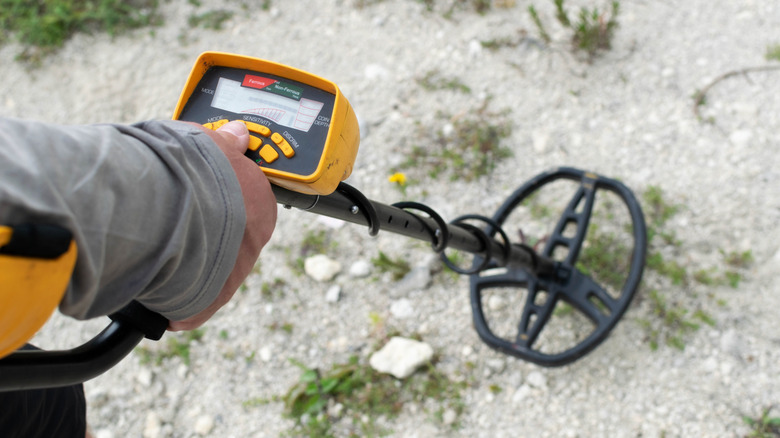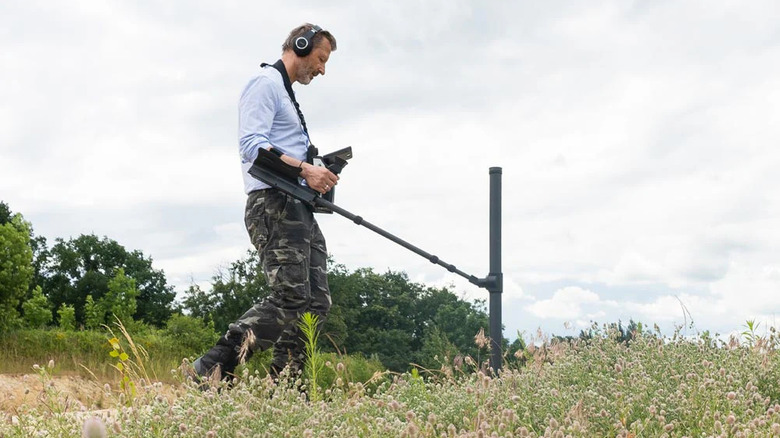How Deep Can A Metal Detector Typically Detect?
So, you've binged a few treasure-hunting shows and now you're wondering if your own old detector in the garage can find you a pirate chest. One of the first questions that may pop up in your head before you get started is "How deep can this thing even go?" The short answer is that most consumer-grade machines will happily ping on coins buried between 10 and 16 inches deep.
But that's just a baseline, and there are many other factors at play. For example, the target itself is a huge factor. A large metal box might be detectable several feet down, while a tiny gold nugget will be a much shallower find. The object's material also matters immensely. Metals with high conductivity, like silver and copper, send back a much stronger signal than less conductive ones. Even the way an object is sitting in the dirt can change things. For instance, a coin lying flat is an easier target than one on its side.
Your detector's core technology plays the biggest role. Most hobbyist detectors are Very Low Frequency (VLF) models. They are fantastic all-rounders, perfect for finding coins and jewelry at depths up to about 12 inches. Then you have Pulse Induction (PI) detectors. These can handle highly mineralized ground because they power through the interference, often finding larger objects several feet down. A few specialized detectors, as you'll see later, use advanced technologies to detect as deep as 20 feet into the ground.
The science behind depth
The magic of a metal detector happens in the search coil at the bottom of the shaft. It contains two sets of wires, namely a transmitter coil that shoots an electromagnetic field into the ground and a receiver coil that listens for changes in that field. A metal object messing with the field is what triggers that satisfying beep.
The size of that coil is probably the most critical variable for depth. A bigger coil can punch that magnetic field deeper into the soil. A good rule of thumb is that a 12-inch coil can typically find a coin-sized object at a 12-inch depth. The catch is that smaller coils are better at spotting smaller targets. The quality of these components also varies by price, as the debate over whether a Harbor Freight metal detector is any good reveals.
The detector's operating frequency is just as important. Low frequencies are better at finding large, highly conductive targets like big silver coins. High frequencies are better at detecting small, low-conductivity items like tiny gold flakes. This is why a new trend is multi-frequency detectors that use several frequencies at once to cover all the bases. The ground itself is the final boss. Soil with lots of minerals, like iron or salt, can mess with the detector's signal.
Tools for more serious metal detecting do exist
Sometimes, regular hobbyist models just don't cut it. That's when you need to upgrade to specialized deep-seeking detectors. One step up is the "two-box" detector. The Fisher Gemini 3, for instance, uses a separate transmitter and receiver to find huge targets as deep as 20 feet. If that's not enough, it also features multiple search modes to help you find specific objects, including free search for larger pieces and inductive search for wider coverage. You even get pipeline and cable tracing modes. Another example, the Garrett GTI 2500, uses a Depth Multiplier attachment that is purpose-built to locate large, deep items while completely ignoring small junk. This is a highly advanced device, but Garett says that its basic automatic operation makes it very simple to operate.
For the true pros hunting for buried caches or ancient ruins, there's an even wilder tier of tech. A German company called OKM makes what are essentially 3D ground scanners. Their OKM eXp 6000 can locate objects as far down as 82 feet. It's one of the metal detectors used on The Curse of Oak Island in their famous treasure hunt.


